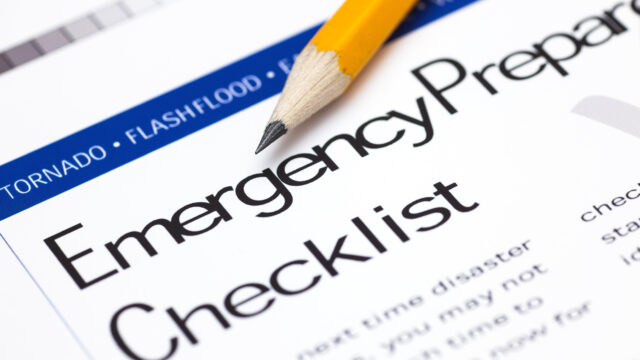What’s Public Health Got to Do with… Emergency Preparedness?

A comprehensive public health preparedness system is crucial for protecting the health of individuals and communities in the face of emergencies and disasters. Trust for America’s Health’s annual report Ready or Not 2024: Protecting the Public’s Health from Diseases, Disasters, and Bioterrorism evaluates national and state emergency preparedness and identifies key gaps where emergency readiness could be improved.
Using nine key indicators, including public health funding, seasonal flu vaccination rates, and patient safety rates in hospitals, among others, Ready or Not places states into three readiness tiers: high, middle, and low. In the 2024 edition, 21 states and DC placed in the high-performance tier, while 13 and 16 states placed in the middle- and low-performance tiers, respectively.
This year, the report includes a special feature on the increasing negative health impacts of extreme heat in high-risk populations, such as older adults. In recent years, heat waves have become both more frequent and more intense, occurring in places that lack the infrastructure to adequately respond to higher temperatures. Older adults are at higher risk of experiencing negative health outcomes during heat emergencies as aging may be accompanied by decreased thirst and sweat responses, higher rates of age-related and complex chronic conditions, and greater use of medications that can alter the body’s response to heat.
Socioeconomic vulnerabilities also increase older adults’ risk of negative health outcomes during extreme heat events. Increased social isolation and reliance on public transport make it difficult for older adults to receive notifications about extreme heat and to travel to cooling centers or shelters. In addition, older adults who are people of color, immigrants, have limited English proficiency, members of the LGBTQ+ communities, live in rural settings, or hold multiple of these identities all face increased risk during heat-related emergencies because of unique access issues.
The Pacific Northwest experienced an extreme heat wave in 2021, during which the community experienced 157 heat-related deaths. Almost 70% of these deaths occurred in adults 65 and over. In response, the Public Health Department of Seattle and King County (PHDSKC) developed an Extreme Heat Response Plan to outline strategies the public health sector can take to protect the community and limit poor health outcomes from heat-related emergencies. These strategies include a new notification and warning system, and better collaboration with local emergency management for incident action planning.
More recently, the PHDSKC conducted a survey of the county’s senior centers to assess their readiness for heat-related emergencies. Results showed that only about 50% of senior centers were able to serve as cooling centers during extreme heat events, with staffing being the greatest identified barrier to providing extended support during emergencies.
The AFPHS 6Cs Framework offers guidance to state and local health departments to enhance efforts to protect older adults from the effects of extreme heat events. Here are further examples of how the Framework can guide efforts for emergency preparedness:
- Create and lead efforts to prioritize older adults’ health and well-being during emergencies by including older adults in emergency preparedness policies and plans.
- Connect and convene key partners across aging services, emergency services, and healthcare to build a high-level coalition committed to optimizing emergency preparedness systems and support for older adults.
- Coordinate existing emergency preparedness supports and tools to produce a centralized hub of emergency protocols, evidence-based toolkits, and accessible resources for both older adults and their caregivers to use before and during an emergency.
- Collect, analyze, and translate data on shortcomings of existing emergency systems to identify needs and disparities among older adults as well as pathways for strengthening their emergency resiliency.
- Communicate the heightened risks older adults face during emergencies and ensure that this population and their caregivers are well-informed on available resources for maintaining health and well-being during an emergency.
- Complement general support systems for older adults by distinguishing and addressing the additional needs of certain groups among older adults, such as those with Alzheimer’s disease and related dementias, those with impaired mobility, or those who live in disaster-prone areas, or in homes without air-conditioning.
See these resources for additional information:
- National Advisory Committee on Seniors and Disasters – Administration for Strategic Preparedness and Response
- Addressing the Access and Functional Needs of At-Risk Individuals – Administration for Strategic Preparedness and Response
- Public Health Workbook to Define, Locate, and Reach Special, Vulnerable, and At-Risk Populations in an Emergency – Centers for Disease Control and Prevention